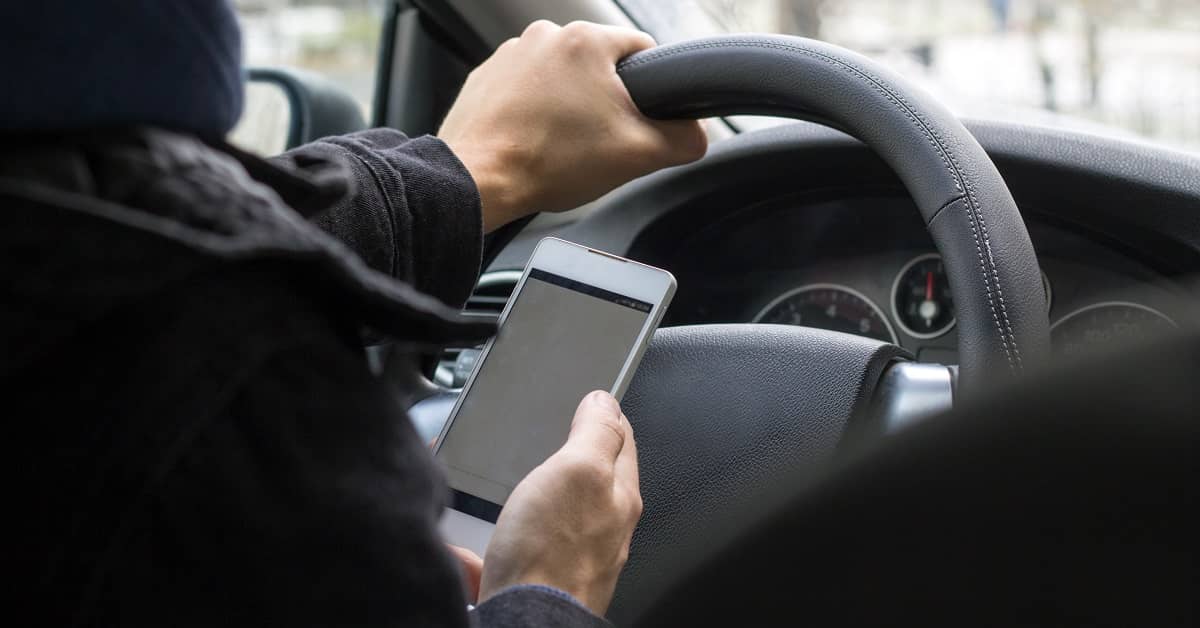
Knowing how to avoid a distracted driver could save your life. According to the Centers for Disease Control and Prevention (CDC), nine people are killed each day in the United States in accidents involving distracted drivers. That equals more than 3,000 deaths per year due to distracted driving alone. This number is why it is so important to be aware of the different types of distracted drivers and how to spot them so that we can drive defensively and keep ourselves and our loved ones safe.
Here, we are going to take a closer look at the problem of distracted driving, and how you can be better equipped to avoid distracted drivers. If you have been in an accident with someone who was driving distracted, please get in touch with the car accident attorneys at Fuller & Fuller as soon as possible for a free case review.
What Are the Three Types of Distracted Driving?
According to the CDC, there are three types of distracted driving: visual, manual, and cognitive. Let’s quickly define each of these:
- Visual distraction: This is when your eyes are not focused on the road ahead. You may instead be looking at a phone screen, at something outside the car, or at a passenger in the car. Regardless, your eyes are not trained on the road, meaning you may not be able to react as quickly as you should to sudden changes ahead, such as a car merging in front of you, debris, or a turn in the road.
- Manual distraction: Manual distractions occur when you take your hands off the wheel. Even if your eyes are focused on the road, not being physically prepared to respond to your environment can result in accidents. This is why, even with most modern cars having some autonomous steering features, drivers are still required to maintain contact with the steering wheel.
- Cognitive distraction: Safe driving is not just about where you are looking and the position of your hands and feet. It is just as much about your mind and how you stay focused and attentive to your environment. Even if you are looking at the road and your hands are on the wheel, if you are distracted by a conversation or lost in thought, it can be just as dangerous as either of the other types of distracted driving.
The reason it is important to understand the types of distracted driving is that it helps you better and more quickly identify distracted drivers on the road.
Common Driving Distractions
As you might suspect, texting is the most common and alarming type of distracted driving. Part of why it is so dangerous is because it involves all three types of distractions. You are visually distracted since you are looking at your screen and not the road; you are manually distracted since at least one of your hands will be holding your phone and not your steering wheel; and you are cognitively distracted because you are thinking about the text and not your environment or the road ahead.
That said, texting is just one activity on a smartphone that can distract you in all of these ways. With everything we can do on a phone these days – from checking and writing emails to playing games and watching television – the opportunities for complete distraction are plentiful.
There are, however, non-smartphone-related distractions that can lead to accidents, including eating and drinking, talking to other passengers in the vehicle, applying makeup, and even changing clothes. While not as prevalent as using a smartphone, these activities can be just as dangerous.
5 Signs of a Distracted Driver
So if you are on the road, what are some important things to look out for to help identify distracted drivers? Here are five to keep top of mind:
- Looking Down or Bent-Over Posture: If you notice someone is looking down or has a hunched-over posture while driving, it’s a good indicator they are on a smartphone and not paying close attention to the road ahead.
- Chewing, Drinking, or Eating: If you see someone having a meal while driving, they are likely manually distracted, meaning they may be slow to respond to changes around them and may not be as aware of other vehicles as they should be.
- Failing to Maintain a Consistent Speed: One of the tell-tale signs that someone is cognitively distracted is if their speed is constantly changing. When someone is distracted, they tend to slow down and then, when their attention is back on the road, speed back up.
- Hitting the Brakes Frequently and Suddenly: Abrupt braking patterns may indicate a cognitive or manual distraction – or both. For example, if they’re trying to change their shoes or they drop something on the floor, it may cause their foot to slip and hit the brake pedal.
- Personal Interactions: If you see a lot of movement in a car, especially if it involves the driver turning around and interacting with someone – such as a child or friend – in the back seat, they clearly are not as focused as they should be on their driving.
In some cases, you may notice multiple signs – such as someone who is changing speeds frequently and also appears to be talking on the phone – in which case you should be extremely careful to drive as defensively as possible to compensate for their lack of attention.
If possible, the best thing to do is get out of their immediate environment, whether that means slowing down, changing lanes, or even taking a quick break at a rest stop.
Call a Car Accident Lawyer in Washington for FREE
If you were hit by a distracted driver, you need to know your rights. At Fuller & Fuller, Attorneys PLLC, we help those who have been injured as a result of someone else’s negligence or wrongdoing. We can explain your rights, discuss your legal options, and pursue the compensation to which you may be entitled under the law.
To get started, call (800) 570-4878 now for a FREE case evaluation. With offices in Olympia and Tacoma, we represent victims of distracted driving throughout Washington.






